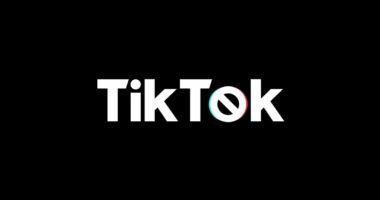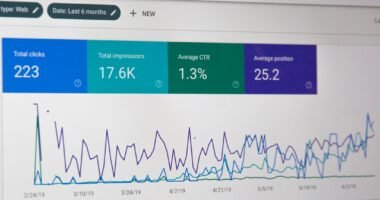Influencer marketing has emerged as a powerful tool in the digital marketing landscape, leveraging the reach and credibility of individuals who have established a significant following on social media platforms. At its core, influencer marketing involves collaborating with these individuals—often referred to as influencers—to promote products or services to their audience. This strategy capitalizes on the trust that influencers have built with their followers, making it an effective way to reach potential customers in a more organic and relatable manner.
Unlike traditional advertising, which can often feel intrusive or disingenuous, influencer marketing allows brands to present their offerings in a context that feels authentic and engaging, thereby enhancing the likelihood of conversion. The rise of social media has played a pivotal role in the evolution of influencer marketing. Platforms such as Instagram, TikTok, and YouTube have given rise to a new breed of celebrities who wield significant influence over their followers’ purchasing decisions.
These influencers range from macro-influencers with millions of followers to micro-influencers who may have a smaller but highly engaged audience. The diversity in influencer types allows brands to tailor their marketing efforts based on their target demographic, ensuring that their message resonates with the right audience. As consumers increasingly seek authenticity and relatability in brand interactions, understanding the fundamentals of influencer marketing becomes essential for any e-commerce brand looking to thrive in a competitive marketplace.
Key Takeaways
- Influencer marketing involves collaborating with influential individuals to promote your brand and products to their audience.
- When identifying influencers for your e-commerce brand, consider factors such as relevance to your niche, engagement with their audience, and authenticity.
- Craft an effective influencer marketing strategy by setting clear goals, defining your target audience, and establishing a budget for collaborations.
- Building authentic relationships with influencers involves genuine communication, mutual respect, and understanding their creative freedom.
- Create compelling content for the campaign by aligning with the influencer’s style, showcasing your product in an authentic way, and providing value to their audience.
- Measure the success of your influencer marketing campaign by tracking key performance indicators such as engagement, reach, and conversion rates.
- Leverage user-generated content from the campaign by repurposing it for your brand’s social media, website, and other marketing channels.
- Scale and optimize your influencer marketing efforts by analyzing data, experimenting with different influencers, and continuously refining your strategy.
Identifying the Right Influencers for Your E-commerce Brand
Defining Your Target Audience
Selecting the right influencers is crucial for the success of any influencer marketing campaign. The first step in this process involves defining your target audience and understanding their preferences, interests, and behaviors. By identifying the demographics that align with your brand’s offerings, you can begin to search for influencers who resonate with that audience.
Key Factors to Consider in Influencer Selection
This means looking beyond mere follower counts; engagement rates, content style, and audience demographics are equally important factors to consider. An influencer with a smaller but highly engaged following may yield better results than one with a vast but passive audience. Therefore, conducting thorough research and analysis is essential to ensure that the influencers you choose can effectively communicate your brand’s message.
Exploring Social Media Platforms and Influencer Discovery Tools
Once you have a clear understanding of your target audience, the next step is to explore various platforms where potential influencers are active. Different social media channels cater to different types of content and audiences; for instance, Instagram is known for its visual appeal, while TikTok thrives on short-form video content. By analyzing influencers across these platforms, you can identify those who not only align with your brand values but also have a proven track record of successful collaborations within your niche. Additionally, tools and platforms designed for influencer discovery can streamline this process by providing insights into an influencer’s reach, engagement metrics, and audience demographics.
Crafting an Effective Influencer Marketing Strategy

An effective influencer marketing strategy is built on clear objectives and measurable goals. Before launching a campaign, it is essential to define what you hope to achieve—whether it’s increasing brand awareness, driving traffic to your website, or boosting sales of a specific product. By establishing these goals upfront, you can tailor your approach and select the right influencers who align with your objectives.
For instance, if your primary goal is to enhance brand visibility, collaborating with macro-influencers who have a broad reach may be beneficial. Conversely, if you aim to foster deeper connections with a niche audience, micro-influencers might be more suitable due to their ability to engage authentically with their followers. In addition to setting clear goals, developing a comprehensive campaign plan is vital for ensuring that all aspects of the influencer collaboration are well-coordinated.
This includes outlining the campaign timeline, budget allocation, content guidelines, and key performance indicators (KPIs) for measuring success. Communication is key during this phase; providing influencers with creative freedom while also ensuring they understand your brand’s messaging will lead to more authentic content creation. Furthermore, consider incorporating various types of content—such as sponsored posts, stories, or giveaways—to keep the campaign dynamic and engaging.
By crafting a well-thought-out strategy that aligns with your brand’s vision and objectives, you can maximize the impact of your influencer marketing efforts.
Building Authentic Relationships with Influencers
Building authentic relationships with influencers goes beyond mere transactional interactions; it requires fostering genuine connections that benefit both parties involved. To establish these relationships, brands should approach influencers as partners rather than just promotional vehicles. This means taking the time to understand their values, interests, and creative processes.
Engaging with influencers on social media by liking their posts, commenting thoughtfully, or sharing their content can help lay the groundwork for a more meaningful partnership. When influencers feel valued and appreciated, they are more likely to invest their time and creativity into promoting your brand authentically. Moreover, transparency is crucial in cultivating trust between brands and influencers.
Clearly communicating expectations regarding deliverables, timelines, and compensation helps set a solid foundation for collaboration. Additionally, allowing influencers creative freedom in how they present your products can lead to more authentic content that resonates with their audience. When influencers feel empowered to express their unique voice while representing your brand, it enhances the overall effectiveness of the campaign.
Ultimately, nurturing these relationships over time can lead to long-term partnerships that yield ongoing benefits for both the brand and the influencer.
Creating Compelling Content for the Campaign
The success of an influencer marketing campaign hinges significantly on the quality of content produced during the collaboration. Compelling content not only captures attention but also conveys your brand’s message in an engaging manner. To achieve this, it is essential to collaborate closely with influencers during the content creation process.
Providing them with key information about your products or services while allowing them creative freedom can result in authentic storytelling that resonates with their audience. Whether it’s through visually stunning images on Instagram or entertaining videos on TikTok, the content should reflect both the influencer’s style and your brand’s identity. In addition to visual appeal, incorporating storytelling elements into the content can enhance its impact.
Audiences are drawn to narratives that evoke emotions or provide relatable experiences; therefore, encouraging influencers to share personal anecdotes related to your products can create a deeper connection with their followers. For instance, if you’re promoting a skincare line, an influencer might share their personal journey toward achieving healthy skin using your products. This not only showcases the effectiveness of your offerings but also humanizes the brand in the eyes of potential customers.
By prioritizing compelling content creation that aligns with both the influencer’s voice and your brand’s message, you can significantly enhance engagement and drive conversions.
Measuring the Success of Your Influencer Marketing Campaign

Establishing Key Performance Indicators
Measuring the success of an influencer marketing campaign is crucial for understanding its effectiveness and informing future strategies. To achieve this effectively, brands should establish key performance indicators (KPIs) aligned with their campaign objectives from the outset. Common KPIs include engagement metrics such as likes, comments, shares, and click-through rates, as well as conversion metrics like sales generated or website traffic driven by influencer posts.
Tracking and Analyzing Campaign Metrics
By tracking these metrics throughout the campaign duration, brands can gain valuable insights into how well their message resonated with the target audience. This data analysis allows brands to assess the campaign’s performance and identify areas of improvement.
Evaluating Campaign Success through Qualitative Feedback
In addition to quantitative metrics, qualitative feedback should also be considered when evaluating campaign success. Analyzing comments and interactions on influencer posts can provide valuable insights into audience sentiment and perception of your brand. Furthermore, conducting surveys or gathering feedback from influencers themselves can help identify areas for improvement in future collaborations.
Developing a Comprehensive Understanding of Campaign Impact
By combining both quantitative and qualitative data analysis, brands can develop a comprehensive understanding of their campaign’s impact and make informed decisions moving forward. This integrated approach enables brands to refine their influencer marketing strategies and optimize future campaigns for better results.
Leveraging User-Generated Content from the Campaign
User-generated content (UGC) is an invaluable asset that can significantly enhance an e-commerce brand’s marketing efforts following an influencer campaign. When influencers share authentic experiences with your products or services, it often encourages their followers to do the same—resulting in a wealth of UGC that can be repurposed across various marketing channels. This content not only serves as social proof but also fosters community engagement around your brand.
By showcasing real customers using and enjoying your products, you create a sense of authenticity that resonates with potential buyers who may be hesitant about making a purchase. To effectively leverage UGC from an influencer campaign, brands should actively encourage followers to share their own experiences using specific hashtags or tagging the brand in their posts. This not only amplifies reach but also creates a sense of belonging among customers who feel connected to both the brand and its community.
Additionally, featuring UGC on your website or social media channels can enhance credibility and trustworthiness in the eyes of potential customers. By integrating user-generated content into your overall marketing strategy, you can create a more dynamic and relatable brand presence that resonates with consumers.
Scaling and Optimizing Your Influencer Marketing Efforts
As e-commerce brands experience success with influencer marketing campaigns, scaling these efforts becomes a natural progression toward sustained growth. To effectively scale influencer marketing initiatives, brands should consider diversifying their influencer partnerships by collaborating with individuals across various niches and platforms. This approach allows for broader reach while also tapping into different audience segments that may be interested in your products or services.
Additionally, investing in technology solutions that streamline influencer discovery and campaign management can enhance efficiency as you expand your efforts. Optimization is equally important when scaling influencer marketing campaigns. Regularly analyzing performance data from previous campaigns enables brands to identify what worked well and what could be improved upon in future collaborations.
This iterative process allows for continuous refinement of strategies based on real-world insights rather than assumptions alone. Furthermore, maintaining open lines of communication with influencers throughout this process fosters collaboration and encourages feedback that can inform future campaigns. By focusing on both scaling efforts strategically and optimizing based on data-driven insights, e-commerce brands can maximize their return on investment in influencer marketing while building lasting relationships within this dynamic landscape.
FAQs
What is influencer marketing?
Influencer marketing is a type of marketing that focuses on using key leaders to drive a brand’s message to the larger market. These individuals are known as influencers and have a large following on social media platforms.
Why is influencer marketing important for e-commerce brands?
Influencer marketing is important for e-commerce brands because it allows them to reach a larger audience, build trust with potential customers, and increase brand awareness. Influencers have the ability to create authentic and engaging content that resonates with their followers, which can lead to increased sales and brand loyalty.
How can e-commerce brands find the right influencers for their marketing campaign?
E-commerce brands can find the right influencers for their marketing campaign by using influencer marketing platforms, conducting thorough research on social media platforms, and reaching out to influencers directly. It’s important to consider factors such as the influencer’s niche, engagement rate, and audience demographics when choosing the right influencers for a campaign.
What are the key steps to launching a successful influencer marketing campaign for an e-commerce brand?
The key steps to launching a successful influencer marketing campaign for an e-commerce brand include setting clear campaign goals, identifying the target audience, selecting the right influencers, creating engaging content, and measuring the campaign’s success. It’s important to establish a strong partnership with influencers and provide them with the necessary resources to effectively promote the brand.
How can e-commerce brands measure the success of their influencer marketing campaign?
E-commerce brands can measure the success of their influencer marketing campaign by tracking key performance indicators such as engagement rate, click-through rate, conversion rate, and return on investment. Additionally, brands can use tools like Google Analytics and social media analytics to gather data and insights on the campaign’s performance.






